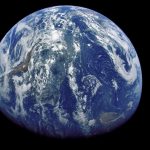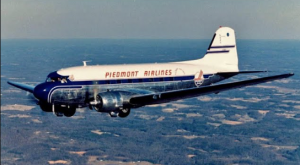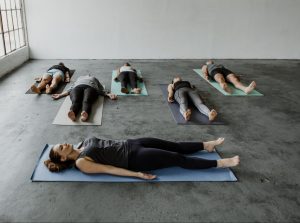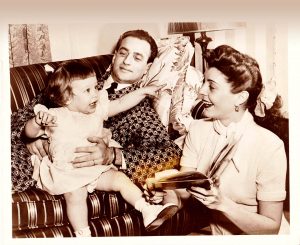The Past is Present
Love in the time of coronavirus
By Maria Johnson
It’s a necessary mutation for me and my 87-year-old mom in these Covid-crazy days when we rightly fear catching and spreading the virus.
We’ve adapted our twice-weekly excursion to an outing that looks like this:
We mask up. I pick her up at home. She rides in backseat, la presidenta–style, catty-cornered from me, her chauffeur. For many reasons, she enjoys this. A LOT.
We’re not quite 6 feet away, but with the SUV’s windows down and the air lashing our hair and, we hope, any vapors of virus, it seems a reasonable way to get away from four walls.
We do curbside pickup for lunch, tip our locally owned restaurateurs liberally, and drive to one of the city’s marinas, which are open 10 a.m. to 3 p.m.
We sit in the car. We rub our hands with hand sanitizer. We drop our masks and turn to our respective open windows. We eat, watching the purple martins wheel, listening to them chatter. We track blue herons in flight, their necks flattened S-curves. We study people fishing from piers, knowing what its like to fixate on a plastic bobber, feeling hope with the slightest wind-driven dip, willing the orb to disappear below the water with the sharp tug of success.
These days, we watch the three lines of coronavirus — confirmed cases, hospitalizations and deaths — the same way.
Sometimes we eat in silence. Sometimes, I nudge the conversation.
“Do you remember the polio epidemic?” I asked her the other day.
I posed the question because the subject had come up in an earlier phone conversation with a dear friend who’d lost her own mother a few days before.
“She wouldn’t go near the water,” my friend reflected.
Her mom’s fear of the water had nothing to do with her swimming ability. It had to do with the polio epidemics of her youth, the 1940s and early 1950s, a time when swimming pools, movie theaters and other public facilities were shuttered because the crippling and sometimes deadly virus.
Not since our mothers’ generation, my friend recognized, have Americans known the screeching brakes of widespread shutdowns designed to smother outbreaks of a pathogen without cure.
“Oh, yes,” my mother remembered between bites of pork souvlaki.
It was, as best she could remember, the summer of 1949.
She was in high school in Spencer, the old railroad town that lies halfway between Greensboro and Charlotte.
Everything was closed that summer.
“We stayed home,” she said matter-of-factly.
Her only escape was to ride her bicycle to the grocery store a few blocks away to pick up the groceries that my grandmother had ordered by phone.
My mom, then a gangly teen, brought the groceries home in a wicker basket on the handle bars of her coaster brake bike.
Soon after one of her trips, she flushed with fever. Her body ached. Dressed in a short, buttoned jumpsuit made of blue-and-white seersucker — she remembered she was stylish in that moment of crisis — she lay on the couch in the living room. My grandmother summoned the family doctor, who came to their home, examined my mom and ruled out polio, pronouncing that my mom had the “summer grippe” instead.
What my mom remembers most, 70 years later, is the emotion — the pure relief that swept over my grandmother when she knew that her youngest was going to be OK, at least for the time being.
“I remember her expression,” my mother recalled. All these years later, she could still see her own mother standing in the doorway between the kitchen and living room. “She relaxed all over.”
My mom’s description of that relief was strikingly similar to the relief that my husband and I had felt just a few days before, when we realized that our older son, who lives in Brooklyn, in the center of the biggest red splotch on coronavirus maps, was going to be OK.
He called one night, weak and flat, with the news that he most likely had Covid-19. He couldn’t get a test — no one could get a test unless they were sick enough to be admitted to a hospital, and no one was going near the hospitals because they were overrun. If you didn’t have Covid-19 when you arrived, you’d surely have it when you left.
But our 27-year-old son had all of the symptoms, so he self-quarantined in his apartment. He slept for days. Meanwhile, we didn’t sleep until we could hear the strength creep back into his voice. Gradually, his symptoms lifted.
We let go the same humbled breath that my grandmother let go.
The breath exhaled by anyone who is spared.
The fear-heavy breathe that, as of this writing, the families of more than 20,000 Americans who’ve perished from Covid-19 never had a chance to release with thanksgiving.
My mom had never told me the story of her polio scare, or if she had, it hadn’t stuck. Sitting in the car, I pulled out my smart phone and read about the polio epidemics, plural, that flared like wildfires across in the U.S. in the first half of the last century. Hot spots raged in New York City in 1916 and again, across the country, in 1949 and 1952.
Spurred in part by the devastation of the 1952 outbreak, field-testing began in 1954 on a vaccine developed by Jonas Salk using an inactivated poliovirus. A few years later, human trials began with an oral vaccine based on a weakened, or attenuated, virus. Drops of that vaccine were sometimes administered on a sugar cube. Ask your parents about that, Gen Xers and Zers.
My mom and I finished our lunch, lifted our masks and headed home, the marina gravel crunching under our tires. As we hit the blacktop, a thought occurred to me.
We take no road that has not been taken by many before us, but often, we don’t know how they steered that path, or what they saw, until we ask.
————
Maria Johnson is a contributing editor of O.Henry magazine. If you have a memory of, or a story about, weathering the polio epidemics of the mid-20th century, please let us know.





